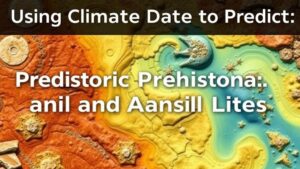Mining Early Land Reclamation Records for Forgotten Settlements
Mining Early Land Reclamation Records for Forgotten Settlements
The historical landscape of any region is often marked by human endeavors to reshape the environment, from agriculture to urban development. Mining early land reclamation records provides a unique lens into the forgotten settlements formed in response to these changes. This article examines the significance of these records, methodologies for analysis, and case studies illustrating their application in uncovering lost communities.
Introduction
Land reclamation, the process of creating new land from oceans, riverbeds, or lake beds, has shaped many regions throughout history. As settlements emerged and faded, early land reclamation records preserved within historical archives often hold the key to understanding these lost communities. Analyzing these records not only aids in uncovering forgotten settlements but also enhances our comprehension of socio-economic transformations in various regions.
The Importance of Land Reclamation Records
Historical documents related to land reclamation are critical for several reasons:
- Documentation of Settlement Patterns: Such records provide insight into how communities evolved over time, revealing migration patterns, economic activities, and social structures.
- Environmental Impact: They help assess the ecological consequences of human interventions, enabling better understanding of past environmental management practices.
- Cultural Heritage: These records serve as a repository of knowledge about the cultural narratives associated with specific regions, contributing to local and national identity.
Methodologies for Mining Records
Mining early land reclamation records involves several methodological approaches:
- Archival Research: This entails examining government archives, historical societies, and libraries to gather documents related to land reclamation, such as maps, land grants, and regulatory filings.
- Geospatial Analysis: Geographic Information Systems (GIS) can be employed to overlay historical land use patterns with current geographical data, allowing researchers to visualize the transformation of areas over time.
- Interdisciplinary Collaboration: Engaging experts from history, archaeology, environmental science, and urban planning can enrich the analysis by providing diverse perspectives on the implications of land reclamation.
Case Studies of Forgotten Settlements
Several notable case studies illustrate the successful application of mining land reclamation records:
Case Study 1: The Hudson River Waterfront
In the late 18th and early 19th centuries, the Hudson River waterfront underwent significant land reclamation to accommodate industry and transportation. Research into archival maps and land records from this period reveals the existence of settlements such as the now-extinct village of Haverstraw. Archaeological excavations and GIS mapping highlight how these communities responded to industrial demands while illuminating the social dynamics of the time.
Case Study 2: The San Francisco Bay Area
The San Francisco Bay Area provides another compelling example, where extensive land reclamation during the Gold Rush led to the establishment of now-forgotten settlements like Yerba Buena Islands early communities. By analyzing land deeds, historic maps, and contemporary aerial photography, researchers have been able to reconstruct the social fabric and economic activities of these settlements.
Challenges and Considerations
While there is immense potential in mining early land reclamation records, several challenges exist:
- Record Availability: Many historical records may be incomplete or inaccessible, making comprehensive analysis difficult.
- Interpreting Historical Context: Researchers must carefully consider the socio-political environment during the reclamation efforts to avoid anachronistic interpretations.
Conclusion
Mining early land reclamation records is a valuable endeavor that can illuminate the histories of forgotten settlements. By employing diverse methodologies and constructing case studies, researchers can offer insights into socio-economic transformations and environmental impacts on both local and regional scales. Understanding these settlements not only enriches our historical knowledge but can also inform current land use practices and conservation efforts.
Actionable Takeaways
Moving forward, historians, urban planners, and environmental scientists should:
- Collaborate across disciplines to enhance the understanding of historical land use patterns.
- Promote public engagement with local history through community-based projects that highlight reclaimed land.
- Advocate for the digitization and preservation of early land reclamation records to ensure accessibility for future research.
By leveraging these strategies, the legacies of forgotten settlements can be unearthed, ensuring that the historical narratives of our landscapes are preserved for generations to come.


